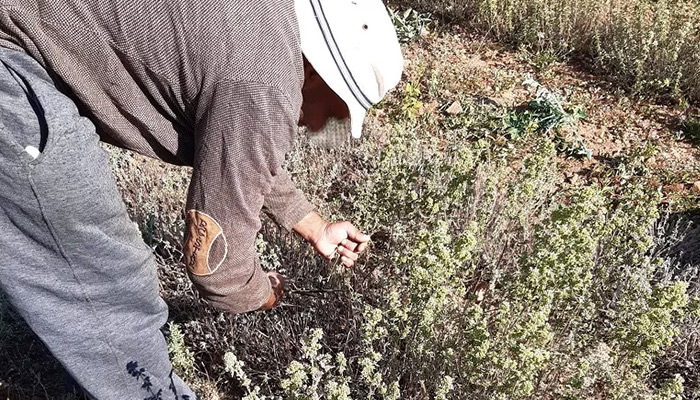Crete, the largest island in Greece, is renowned for its stunning landscapes, rich history, and vibrant culture. Central to this culture is a deep-rooted tradition of farming that has sustained the island’s inhabitants for millennia. Traditional Cretan farming practices are characterized by their sustainability, respect for the natural environment, and the use of age-old techniques passed down through generations. These practices not only ensure the production of high-quality, organic produce but also help preserve the island’s unique agricultural heritage.
The Foundation of Cretan Agriculture
Cretan agriculture has always been a cornerstone of the island’s economy and lifestyle. The island’s varied terrain, from fertile plains to rugged mountains, supports a diverse range of crops and livestock.
The Mediterranean Climate
The Mediterranean climate, with its hot, dry summers and mild, wet winters, is ideal for a variety of crops. This climate allows for the cultivation of olives, grapes, and a wide range of fruits and vegetables. The natural conditions of Crete also favor organic farming, as pests and diseases are less prevalent in this environment.
Key Traditional Crops and Techniques
Several crops and farming techniques are emblematic of traditional Cretan agriculture, each reflecting the island’s commitment to sustainability and quality.
Olive Cultivation
Olive trees are perhaps the most iconic element of Cretan agriculture. Olive oil production dates back thousands of years and remains a vital part of the island’s economy and culture.
- Ancient Olive Trees: Many of Crete’s olive trees are centuries old, some even millennia, with gnarled trunks and deep roots. These ancient trees are a testament to the enduring nature of traditional farming practices.
- Hand Harvesting: Olives are typically harvested by hand or using simple tools, ensuring minimal damage to the trees and fruit. This labor-intensive process is crucial for producing high-quality olive oil.
- Cold Pressing: The olives are cold-pressed to extract the oil, a method that preserves the nutritional value and flavor. The resulting extra virgin olive oil is renowned for its rich taste and health benefits.
Viticulture
Grape cultivation and wine production are also central to Cretan agriculture. The island’s vineyards produce a variety of indigenous grape varieties that are used to make distinctive wines.
- Terraced Vineyards: Many vineyards are planted on terraces built into the hillsides. This traditional technique helps prevent soil erosion and maximizes sunlight exposure for the vines.
- Organic Practices: Cretan vintners often use organic farming methods, avoiding synthetic pesticides and fertilizers. This approach not only produces healthier grapes but also supports biodiversity in the vineyards.
- Traditional Winemaking: The winemaking process often involves minimal intervention, allowing the natural flavors of the grapes to shine. Clay amphorae and wooden barrels are sometimes used to age the wine, linking modern production with ancient techniques.
Vegetable and Herb Cultivation
The cultivation of vegetables and herbs is another vital aspect of traditional Cretan farming. The island’s fertile soil and favorable climate support a wide range of crops.
- Seasonal Planting: Farmers follow the seasons, planting and harvesting crops at optimal times to ensure freshness and quality. Commonly grown vegetables include tomatoes, cucumbers, zucchinis, and eggplants.
- Herbs: Wild and cultivated herbs, such as oregano, thyme, sage, and dittany, are integral to Cretan cuisine. These herbs are often foraged or grown in small plots, using organic methods to enhance their flavor and medicinal properties.
- Irrigation Techniques: Traditional irrigation methods, such as using stone channels to direct water from mountain springs, are still employed in some areas. These methods are efficient and help conserve water, a precious resource on the island.
Livestock Farming
Livestock farming, particularly the raising of sheep and goats, is a crucial component of Cretan agriculture. The island’s rugged terrain is well-suited to these hardy animals.
- Transhumance: This traditional practice involves moving livestock between seasonal pastures. In summer, herds are taken to higher altitudes where grazing is plentiful, while in winter, they return to the lowlands. This sustainable practice helps maintain the health of the pastures and the livestock.
- Cheese Production: Sheep and goat milk is used to produce a variety of traditional cheeses, such as graviera, mizithra, and anthotyro. These cheeses are made using age-old techniques that enhance their unique flavors and textures.
Sustainability and Modern Challenges
While traditional Cretan farming practices are sustainable and environmentally friendly, they face several modern challenges.
- Economic Pressures: Globalization and market pressures can make it difficult for small-scale farmers to compete. However, there is a growing market for organic and locally produced foods, which supports traditional farming.
- Climate Change: Changing weather patterns and extreme weather events pose significant challenges. Farmers are adapting by using more resilient crop varieties and innovative water management techniques.
- Preservation Efforts: Various initiatives are in place to preserve and promote traditional farming methods. These include agricultural cooperatives, organic certification programs, and government support for sustainable practices.
Conclusion
Traditional Cretan farming practices are a vital part of the island’s cultural and agricultural heritage. These methods, honed over centuries, emphasize sustainability, quality, and a deep connection to the land. By continuing to uphold these traditions, Cretan farmers not only produce exceptional products but also preserve a way of life that is in harmony with nature. As modern challenges arise, the resilience and adaptability of these practices ensure that Crete’s agricultural heritage will endure, offering future generations the opportunity to experience and enjoy the island’s rich bounty.


